Resources for Novices
Governance:
In the UK, rowing is governed by British Rowing. The Devil’s Elbow is an affiliated club that makes good use of its coaching courses, its safety guidance, insurance etc. British rowing itself is affiliated to FISA ‘The International Rowing Federation’. These between them will set the rules of racing, define the classes and control the sport.
The Types of Boat:
There are two basic types types of boat used for rowing, they are called ‘sculls’ and ‘sweep’ boats. In a scull boat each rower has two oars (or blades) and in sweep rowing they will have just the one and will hold it with both hands.
Scull Boats:
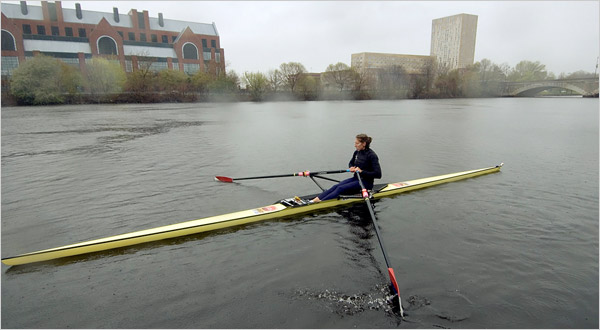
Single (1x):
One rower with two blades. For the confident rower with a good sense of direction. (1x)
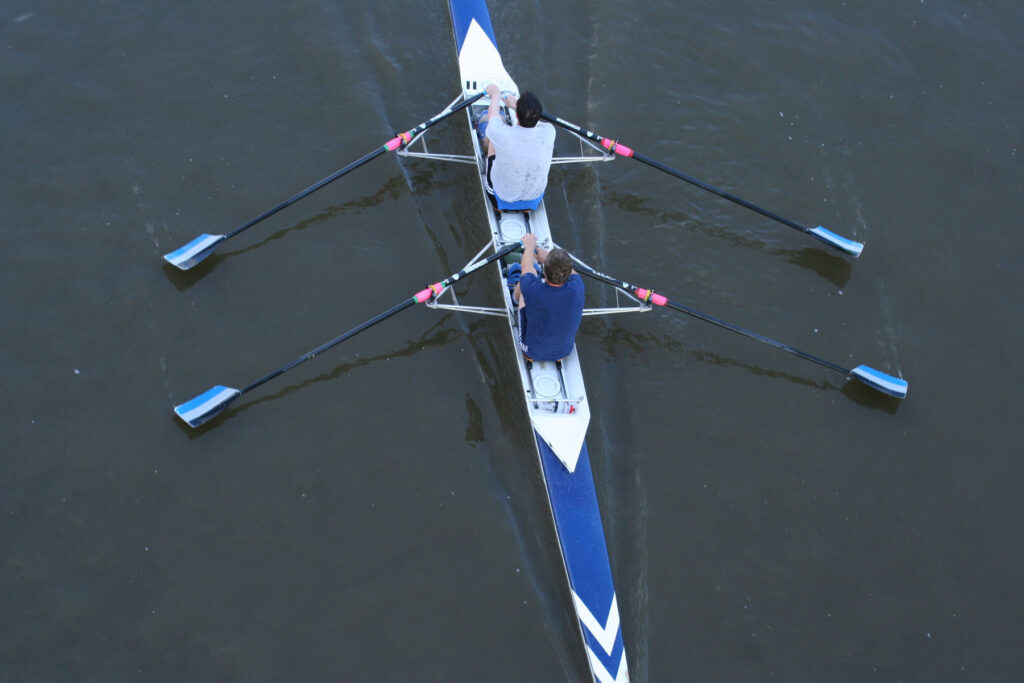
Double (2x):
A stable platform for two rowers. A good training platform requiring skill.
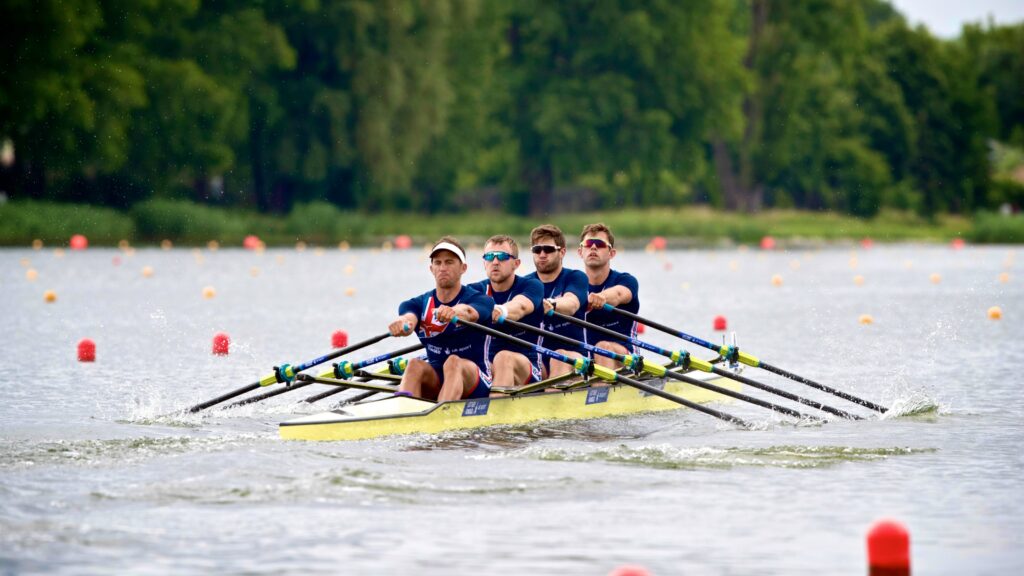
Quad (4x+ or 4x-):
4 people, 8 blades. Lots going on and a popular boat configuration.

Octuple (8x+):
A rare beast and the Devil’s Elbow has one! Huge fun if your club has enough blades.
Sweep Boats:
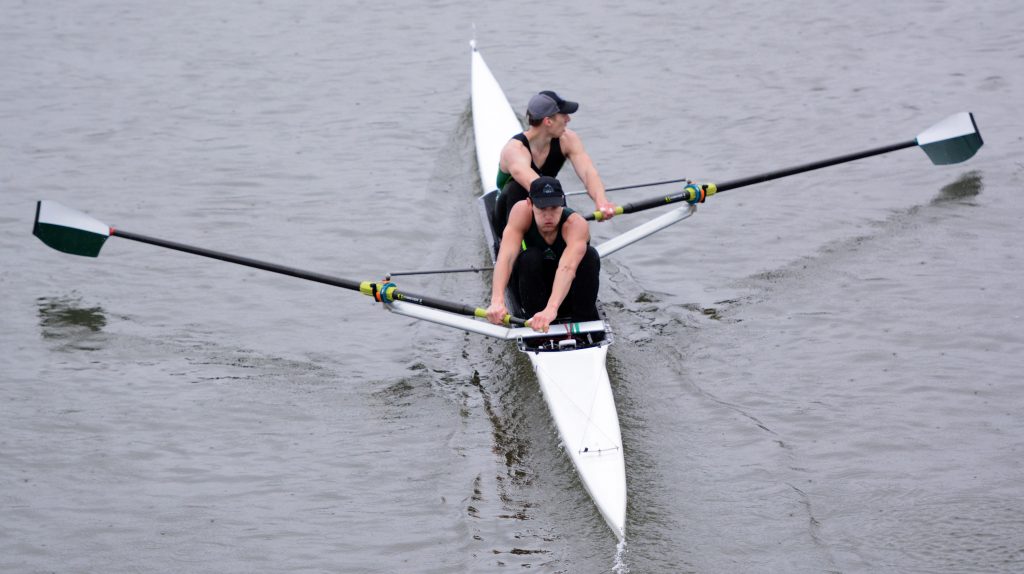
Pair (2-):
With one blade on each side, operated by different people, this is all about skill, timing and complete trust. You will have been rowing for quite a while before you even consider a pair and then you will have to find someone with similar aspirations who can trust you.
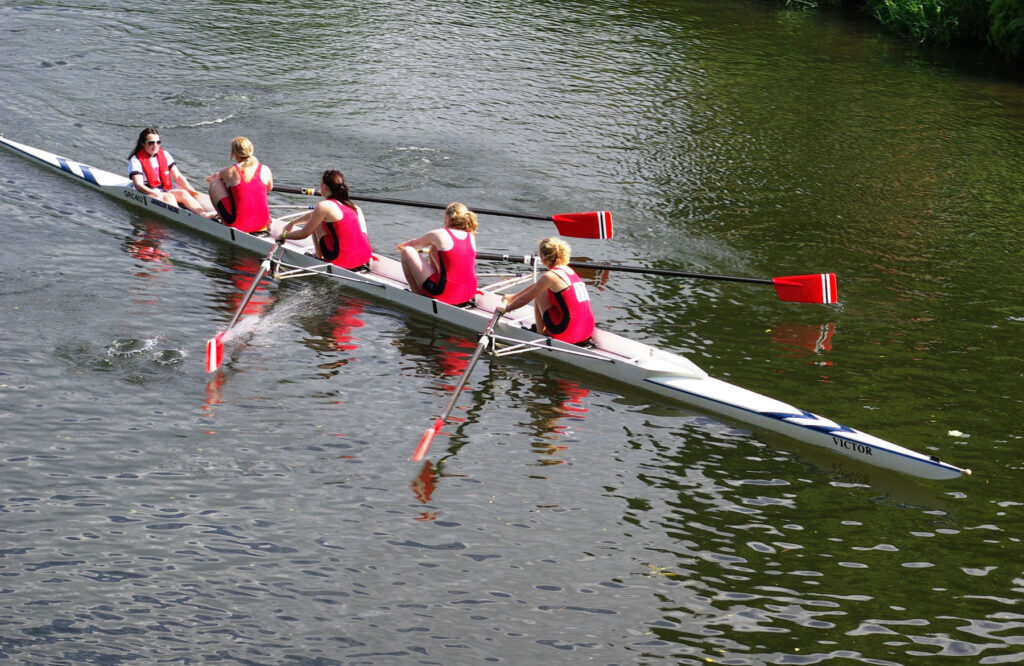
Four (4+ or 4-):
A great boat for racing, practising key skills and exposing faults that might get masked in the bigger 8’s.

Eight (8+):
The fastest boat that eats up the course with a well drilled crew, all operating in sync. Tell people you row and they will think of this.
There is an official shorthand for the different boat types:
1,2,4 or 8 is the number of active rowers.
A ‘x’ tells that the boat is a scull. If there is no x it is a sweep boat.
A ‘+’ means that it there is a cox, a ‘-‘ means that you have to do without and rely on some foot based steering from the bow seat. It also means that you don’t have the weight of the cox, so not all bad.
Examples:
4x- is coxless scull boat with 4 rowers
2- is a coxless pair sweep boat with 2 rowers
4+ is a coxed sweep boat with 4 rowers
There are also prefixes that can be used for Men, Women, Juniors and Light or Heavyweight Crews.
Parts of the Boat:

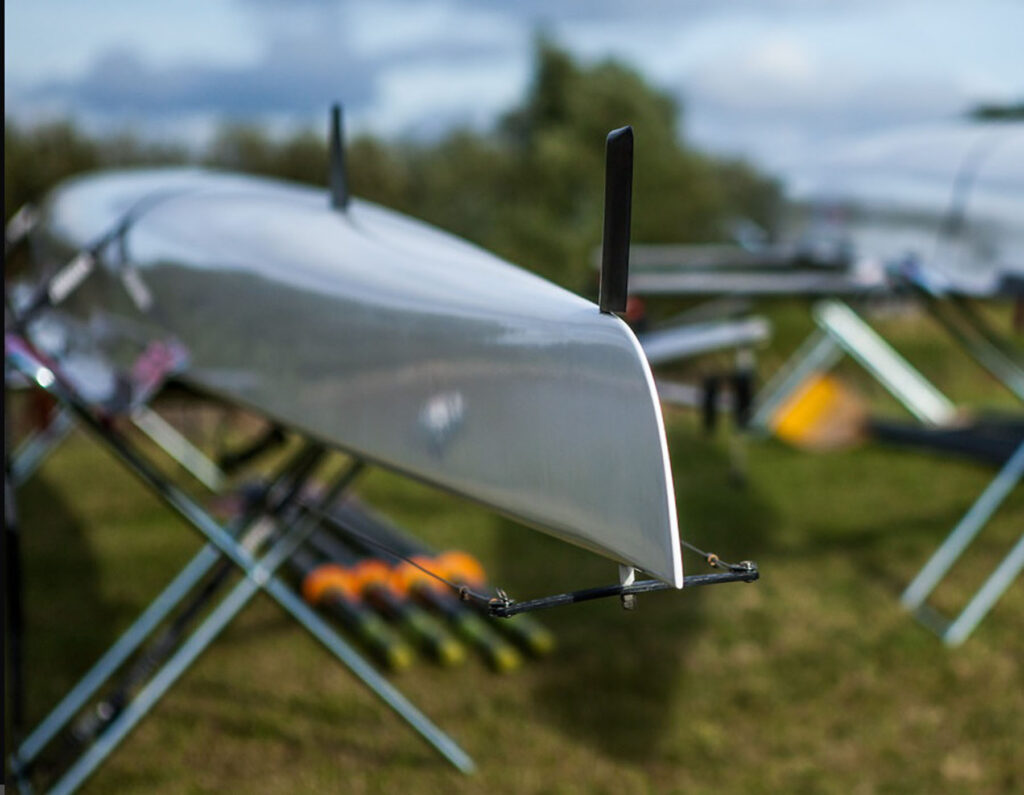
The bow is the front end of the boat. It has a ‘bow ball’ to provide some protection from damage. It also has a slot for mounting race numbers and the name of the boat will be at the bow.
The stern of the boat is at the rear. This is where you find a surprisingly small rudder that is controlled by the cox or one of the rowers themselves in a coxless boat.
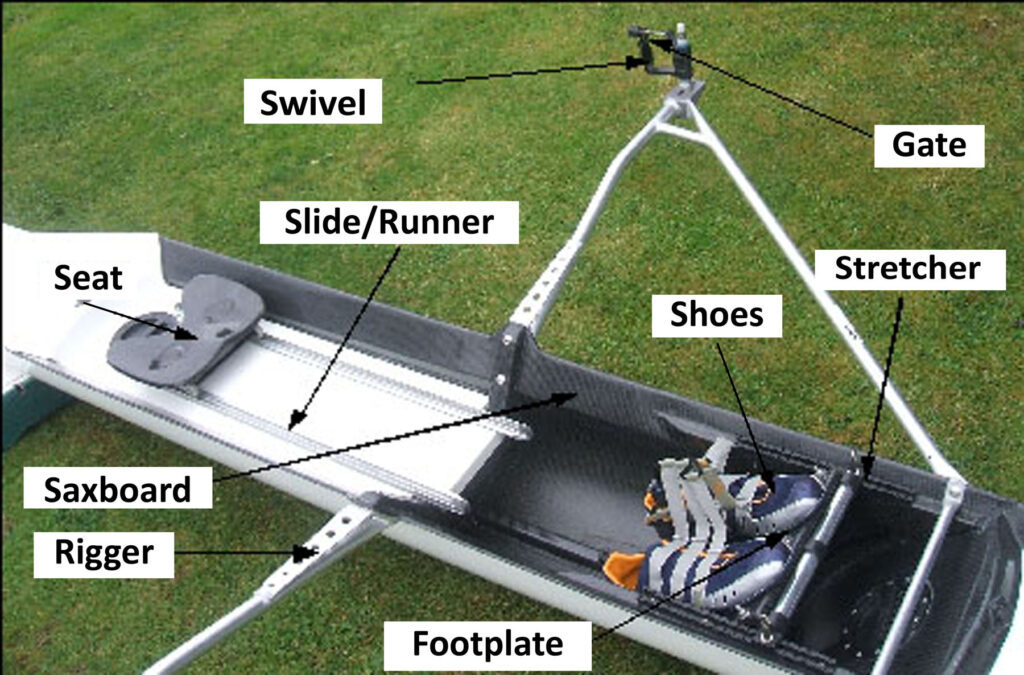
There is a lot going on here but after a few outings it will all become clear. The swivel and gate together allow the oar to move but stay attached to the boat. The stretcher, footplate and shoes and all fixed firmly to the boat. Movement comes from the sliding seat that is restrained in smooth running runners. The seat is built for lightweight function, not comfort. The riggers are lightweight stiff frames that hold the swivel and gate in the right spot for maximum effect. The saxboard is the raised side of the boat that, all being well, will stop you getting soaked in choppy water or by overly splashy colleagues.
The Oars:
The oar is how you generate the leverage and therefore power that moves the boat forward. The blade of the oar is placed in the water and the boat is pulled past it rather that the blade itself moving through the water. Scull oars are shorter than sweep oars and have a single grip. Sweep oars have grips for both hands. It is the collar that sits in the swivel and the button pushes against it to fix its location. There are different specific shapes of blade, but most clubs will use types that provide utility across the range of abilities. It is not for the novice to worry about such things.

Who’s Who In the Boat:
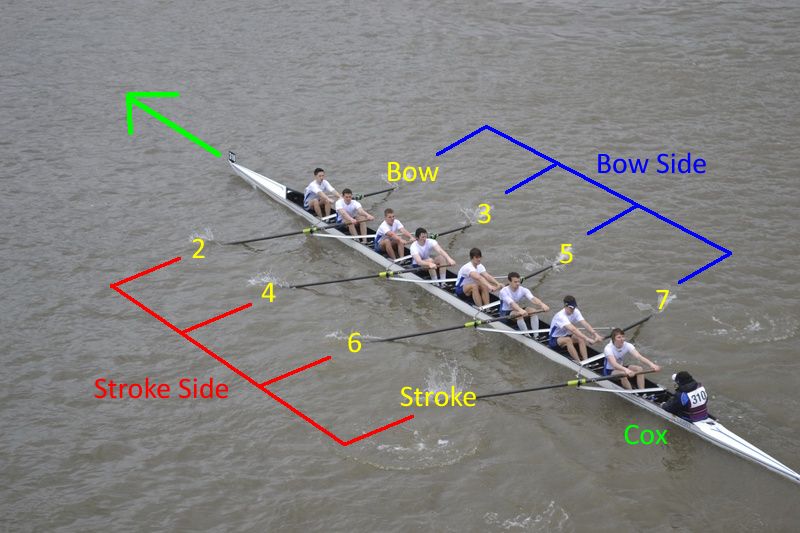
The rower nearest the front of the boat is the no1 seat and is called ‘bow’. The numbers then increase as you move down the boat. The rower nearest the stern is called ‘stoke’. For a quad or 4 the crew would be bow, 2,3 and stroke.
The port side of a rowing boat is called the ‘stroke side’ and the starboard is called ‘bow side’.
Always present in a 8 and sometimes in the smaller boats is the cox. The cox is the conductor of the orchestra, setting the pace, navigating other boats and obstacles and motivating the crew, usually at high volume. The cox is the only crew member who can see the river ahead.
Getting In:
How to get in and move away from the stage in a scull (you will not start off your rowing career in a single scull).
The Rowing Stroke:
Your club instructors will take you through what makes a up a good rowing stoke, nice and slowly. The video below is one of many out there on Youtube that will help you visualise the different stages and so help you feel less under pressure when you get on the water. This video uses a sweep boat but the technique for sculling is very much the same.
It is also worth looking at the land training page as the technique and body positions you should use on indoor rowing machines matches those you need for the boat.
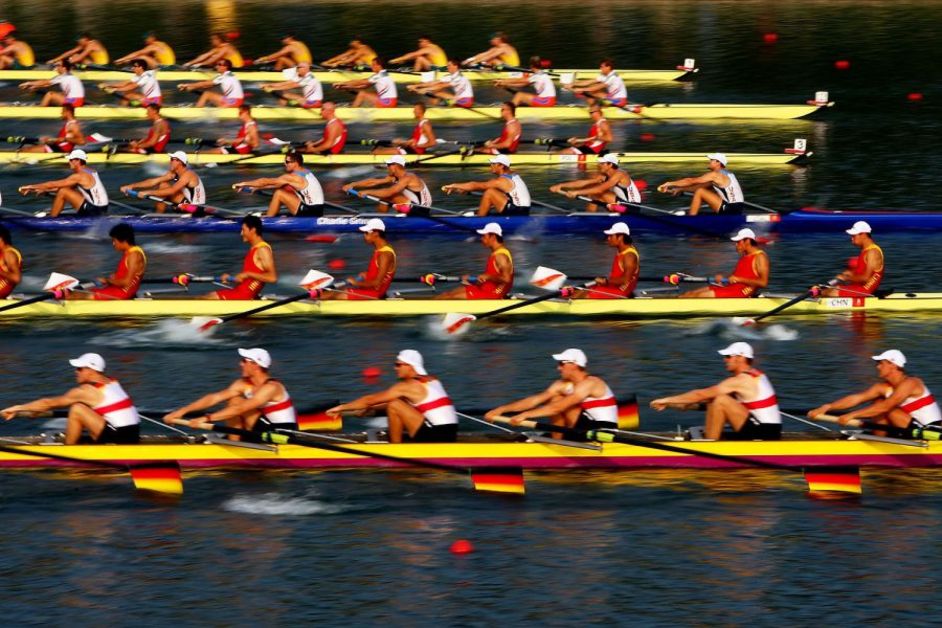
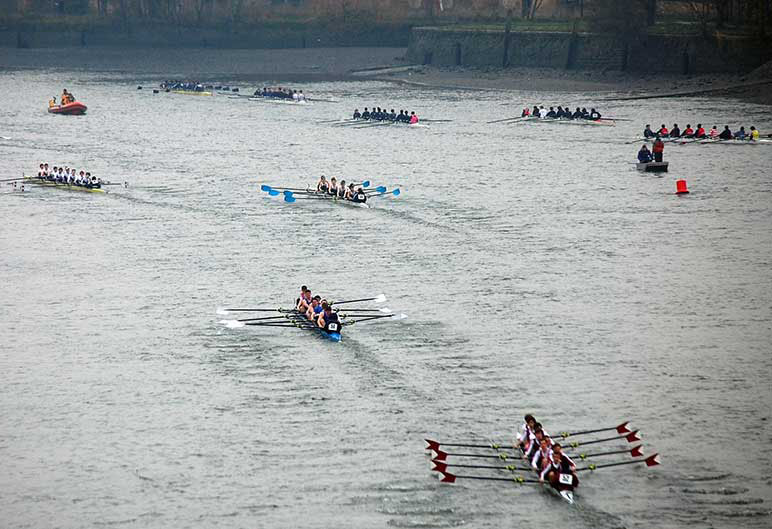
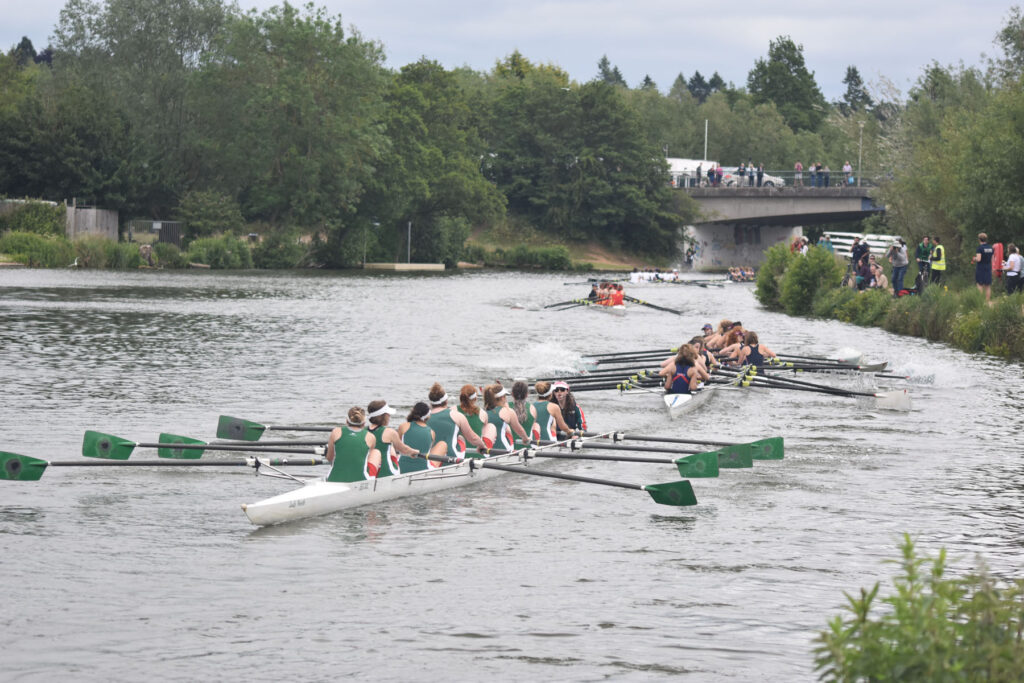
Side by Side
Raced with many boats over a 2km straight line course on lakes at the highest level. Can also be in pairs on rivers and lakes at club level. A simple, if painful, race to the finish against matched competition.
Head Racing
Long distance time trials on rivers, usually in the winter. Covers all sorts of boat configurations and is handicapped for age and experience. A spin off from winter training.
Bumps
Popular at university level with many crews to deal with. The boats in each division start at same time at an even spacing and sprint to catch or ‘bump’ the boat in front. Crashes and accidents are common.
